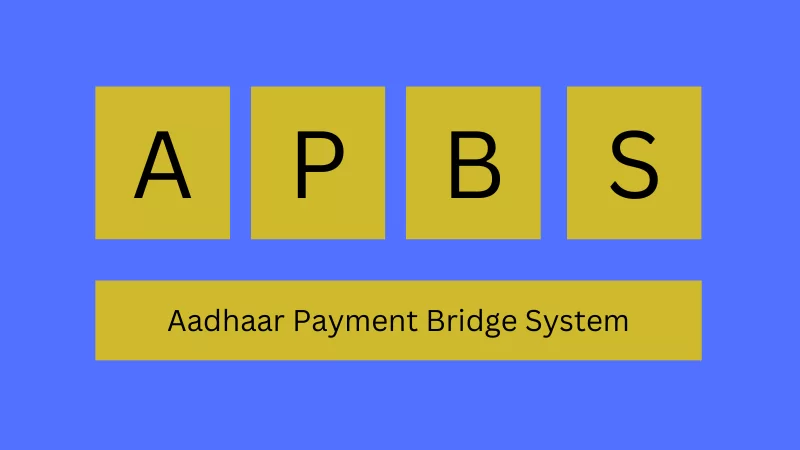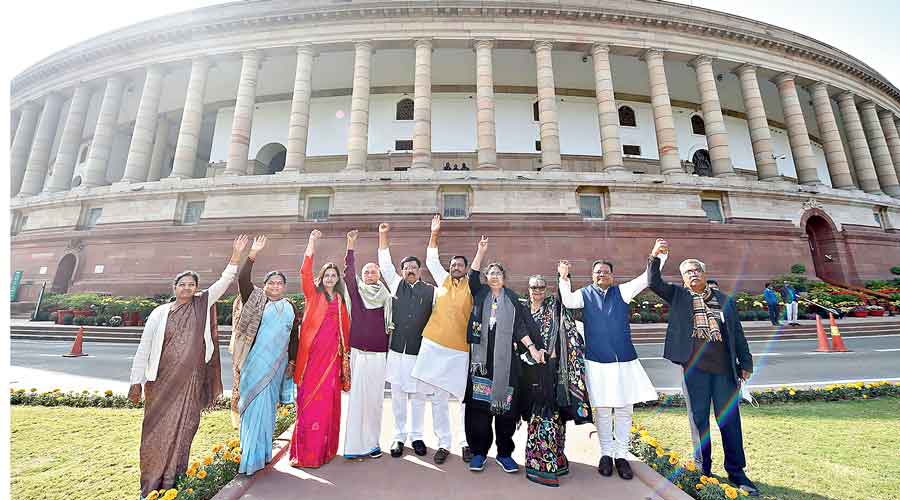The National Payments Corporation of India (NPCI) and the Unique Identification Authority of India (UIDAI) developed the Aadhaar Payments Bridge System (APBS) to make it easier to send money electronically using Aadhaar.
Aadhaar-based transactions can be received by banks, non-banking financial institutions (NBFIs), and other organisations through the centralized APBS system. Physical papers like bank accounts, PAN cards, and voter identity cards are no longer required since the system employs Aadhaar as the primary key for identification and authentication.
Understanding the APBS: A Revolutionary Payment System

To speed up the transfer of money, APBS uses the distinctive 12-digit Aadhaar identification number, a biometric and demographic identifier. The transaction process is sped up and made more inclusive by APBS, that removes the need for conventional paperwork and papers.
The speed with which APBS may release funds is one of its main benefits. Whether users are receiving government aid, pension payments, or other welfare programs, APBS ensures that their funds arrive promptly and directly into the Aadhaar-linked bank accounts. By eliminating intermediaries, this technique reduces the wait periods brought on by manual paperwork and verification.
The speed with which APBS may release funds is one of its main benefits. Whether users are receiving government aid, pension payments, or other welfare programs, APBS ensures that their funds arrive promptly and directly into the Aadhaar-linked bank accounts. By eliminating intermediaries, this technique reduces the wait periods brought on by manual paperwork and verification.
APBS: Connecting Aadhaar to Financial Transactions
Here are some of the ways that APBS can be used to connect Aadhaar to financial transactions:
- DBTs: Aadhaar may be used to locate and verify DBT beneficiaries. This will make it possible to ensure that DBTs are sent to the designated recipients in a timely manner.
- Social security payments: Social security payment recipients can be identified and confirmed using their Aadhaar numbers. This will make it possible to guarantee that these payments are made promptly and effectively to the appropriate recipients.

- Microfinance loans: Microfinance loan applicants’ identities and validity may be verified using their Aadhaar numbers. This will decrease the possibility of fraud and guarantee that only qualified borrowers get microloans.
- Retail payments: Retail payments such as bill payments, shopping purchases, and peer-to-peer transfers can all be made using Aadhaar. Making payments will be simpler and more convenient as a consequence.
Key Components of the Aadhaar Payments Bridge System
The key components of APBS are:
- NPCI: The non-profit organization that manages the APBS system is called NPCI. The infrastructure for the APBS system is built up, maintained, and guaranteed to be secure and dependable by NPCI.
- UIDAI: The government department in responsible for providing Aadhaar numbers is UIDAI. The Aadhaar authentication service, that is used to verify users of the APBS system, is provided by UIDAI.
- Banks: Entities that take part in the APBS system are banks. Payments to and from non-bank businesses as well as payments to and from other banks can be made and received by banks via the APBS system.
- Non-bank entities: The APBS system allows non-bank enterprises such as shops, utility providers, and telecom businesses to send and receive payments.
APBS Workflow: How the System Operates

The APBS workflow is as follows:
- The beneficiary initiates a payment using the APBS system.
- The APBS system authenticates the beneficiary using their Aadhaar number.
- The APBS system then sends the payment instruction to the bank or non-bank entity that is receiving the payment.
- The bank or non-bank entity then credits the payment to the recipient’s account.
Benefits and Advantages of Using APBS for Payments
| Benefit/Advantage | Description |
|---|---|
| Convenience | APBS allows users to make payments quickly and easily without having to visit a bank or other financial institution. This can be especially beneficial for people who live in rural areas or who do not have easy access to banking services. |
| Security | APBS uses Aadhaar authentication to verify the identity of users, which makes it a more secure way to make payments than traditional methods such as cash or checks. This is because Aadhaar is a unique 12-digit number that is issued to every Indian citizen and is linked to their biometric information. |
| Cost-effectiveness | APBS is a cost-effective way to make payments, as it does not require users to pay any fees. This can be especially beneficial for businesses and organizations that need to make large numbers of payments. |
| Scalability | APBS is a scalable system that can be easily adapted to meet the growing demand for digital payments in India. This is because APBS is based on the Unified Payments Interface (UPI), which is a secure and reliable payment system that is used by millions of people across India. |
| Accessibility | APBS is accessible to everyone, regardless of their location or financial status. This is because APBS can be used through a variety of channels, including mobile phones, computers, and point-of-sale (POS) terminals. |
Lessons from APBS Implementation: Best Practices and Lessons Learned
The National Payments Corporation of India (NPCI) and the Unique ID Authority of India (UIDAI) together created the Aadhaar Payments Bridge System (APBS), a payment system that enables the electronic transfer of payments using Aadhaar.
Aadhaar authentication-based payment methods have been effective, including the APBS system. The installation of alternative payment systems that incorporate Aadhaar authentication can be guided by the lessons discovered during the APBS rollout.
FAQs
The full form of APBS is “Aadhaar Payment Bridge System.”
The Aadhaar Payment Bridge System (APBS) is a secure and efficient electronic funds transfer system in India.
APBS works by linking Aadhaar numbers with bank accounts. Beneficiaries’ Aadhaar numbers are used as a reference, and the system facilitates direct transfer of funds from government agencies to their bank accounts, eliminating intermediaries and reducing leakages.
Related posts:
- AMC Full Form: Benefits, Components, Needs, Advantage
- ORS Full Form: Dehydration, Myths, Flavors, Varieties & Facts
- PCC Full Form: Importance, Types, Application Process
- PAN Full Form: Legal Provisions, Regulations,
- BRB Full Form: Productive, Routine, Distractions
- MCD Full From: Introduction, Responsibility, Challenges
- CT Scan Full Form: Scans, price, Advantages
- USA Full Form: History, Economics,Technology, culture




















